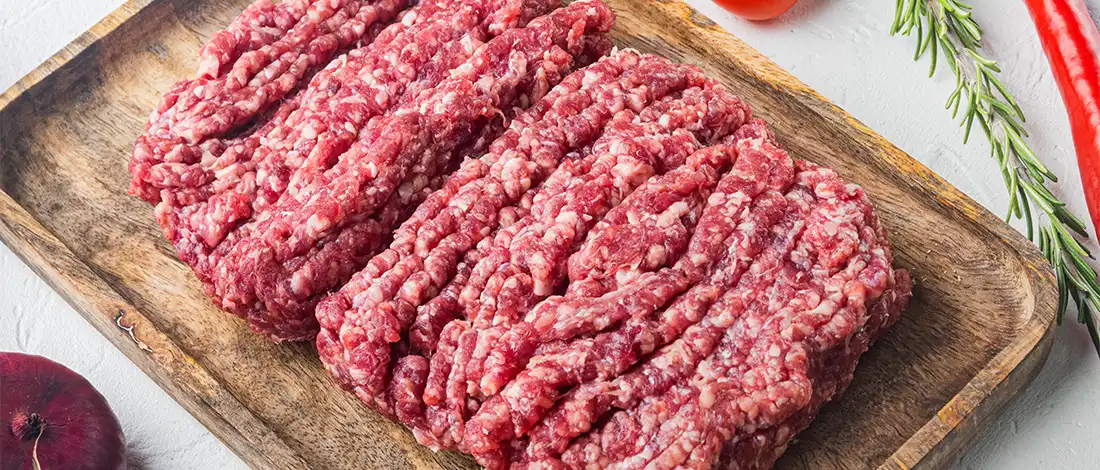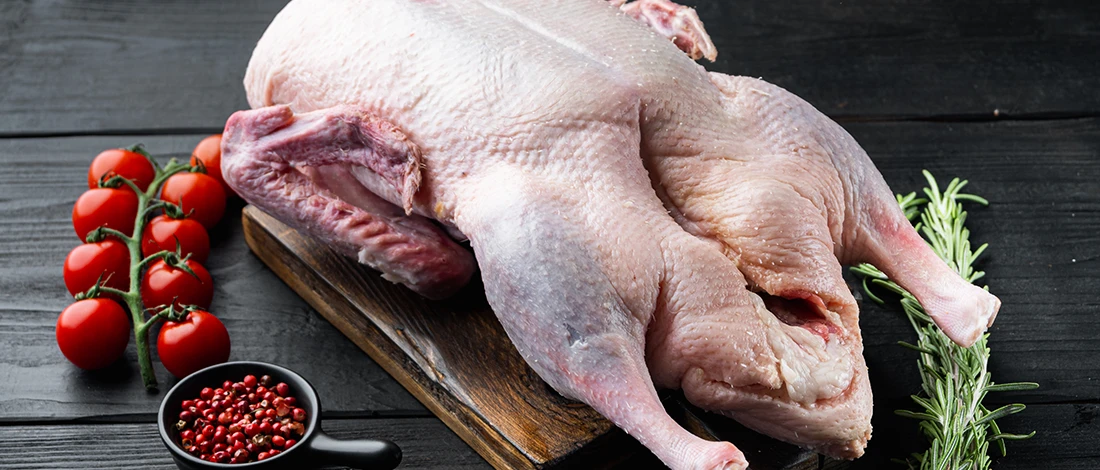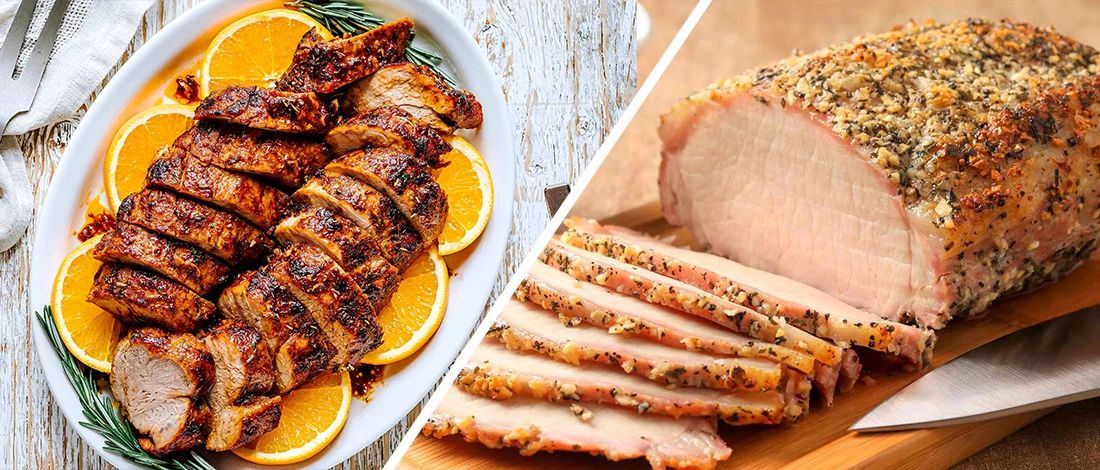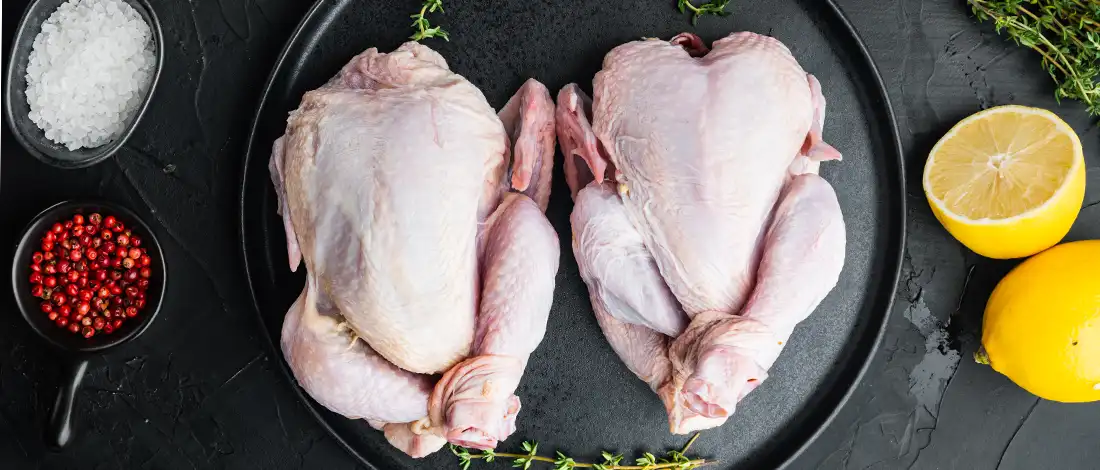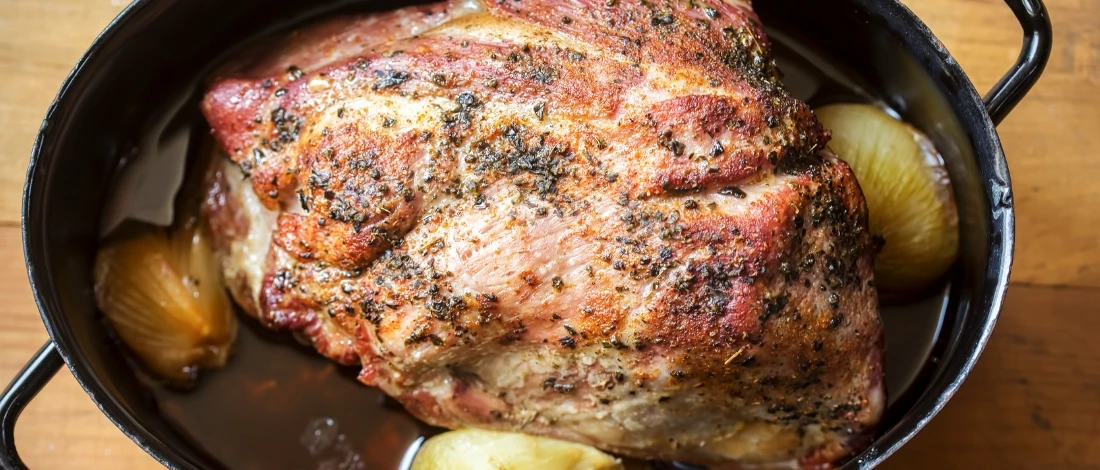Pork and chicken are the two most widely consumed types of meat worldwide. They are affordable, easily accessible, and can be cooked in various ways.
Comparison between the two types of meat carries significant weight if you’re seeking healthier and more sustainable eating habits.
Drawing from years of experience in the culinary industry, online research, and extensive consultations with fellow Carnivore Style chefs and nutritionists, I've unearthed the seven key differences that set pork and chicken apart.
Here are the key differences I found between the two protein sources.
Quick Summary
- Pork is red meat, while chicken is white meat.
- Pork has a unique taste and marbling, while chicken is milder.
- Pork is richer in vitamins and minerals; chicken is lower in fat and calories.
7 Differences Between Pork Vs Chicken
For the past two years, I’ve ordered meat from ButcherBox. They have the best meat delivery service with a wide range of quality heritage-bred pork cuts and poultry raised crate-free.
Here are the seven things that set these two types of meat apart.
1. Meat Type
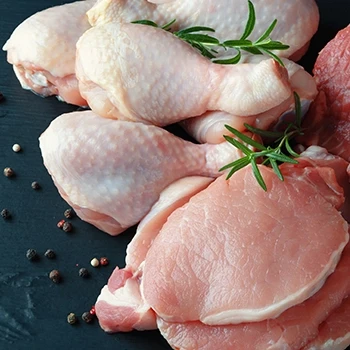
Pork and chicken are classified as two different types of meat. Depending on its definition, pork can be classified as both white and red meats.
According to the culinary definition, white meat is light in color even after cooking.
But, according to the scientific definition, pork is classified as red meat because it has a high amount of myoglobin.
On the other hand, chicken is only classified as white meat.
2. Appearance
One of the biggest differences between pork and chicken is their appearance, especially color. Chicken is usually light pink, while pork is white.
Also, pork has marbling, which chicken doesn’t. Marbling is thin white lines of intramuscular fat. Chicken can have white stripping, where fat resembles white stripes. This isn’t very common and usually happens in larger birds [1].
“Pork is classified as red meat because it contains more myoglobin than chicken or fish. When fresh pork is cooked, it becomes lighter in color, but it is still red meat.”
- U.S. Department of Agriculture
3. Taste
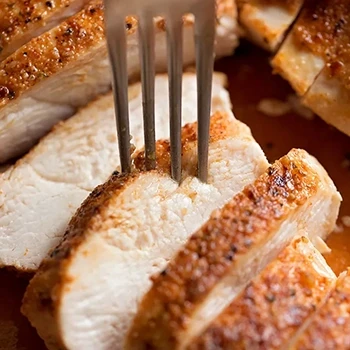
The taste of pork falls somewhere between lamb, goat, and veal. Pork doesn’t taste like chicken but has a touch of sweetness with a fatty and salty undertone. It needs to be seasoned, or it’ll taste bland.
Chicken also tastes bland compared to other meats. It doesn’t have a lot of fat, and fat contributes to flavor more than muscle.
This is why a lean meat cut, such as a skinless chicken breast, tastes bland if not seasoned.
Overall, both of these meats need seasoning to enhance their flavor.
4. Use
Chicken and pork can be used similarly in the kitchen. Both of these can be grilled, broiled, braised, or baked.
Pro tip: Grill or broil lean chicken and pork for healthy meat consumption. This doesn’t add any extra calories or fat.
You also need to be careful how you cook fresh lean pork. Unlike the chicken, which should be cooked until it’s no longer pink and the juices run clear, it’s harder to tell when the pork is done.
Pork also becomes dry quickly, so you should roast and grill it on low heat. Use a meat thermometer and cook pork until it reaches 145 degrees [2].
5. Cuts
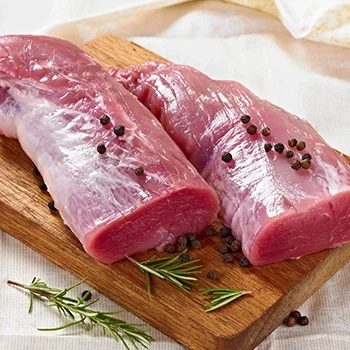
The most common cuts of pork include pork chops, pork tenderloin, loin roast, spareribs, and shoulder. If you want lean pork cuts, go for tenderloin and loin chop.
The most common chicken cuts are breasts, wings, drumsticks, thighs, legs, and whole chicken. If you want fresh, lean chicken, go for chicken breast (without the skin).
You can also buy processed meats. Processed pork meat is preserved by smoking, curing, and salting. The most common pork processed cuts are the shoulder, ham, pork loin, and pork belly.
Related Articles:
6. Nutrition
Here’s how 3 oz of chicken and pork differ in terms of nutrition:
- Calories — 3 oz chicken has 187 calories, while 3 oz pork has 202 calories. The calorie difference isn’t huge.
- Protein — Chicken has 20 g of protein, while pork has 22 g.
- Fat — Total fat in one serving of chicken is 11 g, and 3.1 g is saturated fat. The total fat in pork is slightly higher at 12 g, of which 4.1 is saturated. Overall, pork is slightly higher in fat content, including monounsaturated and saturated. Both chicken and pork are low in trans fat.
- Cholesterol — Chicken has 80 mg of cholesterol, while pork has 75 mg.
- Vitamins — Pork has more vitamins, especially B1, B12, B2, and B6. Pork also has Vitamins C and D, which chicken completely lacks. On the other hand, chicken has more Vitamin A, B3, and B5 but no vitamin K. Both pork and chicken have the same amount of B9 [3] [4].
- Minerals — Pork is the winner in the minerals category. It has more calcium, iron, magnesium, phosphorus, zinc, selenium, copper, and choline. Pork also has less sodium than chicken. However, chicken has more iron and manganese.
7. Cooking Methods
Whеn it comеs to comparing pork vs. chickеn in thе contеxt of cooking mеthods, it's еssеntial to undеrstand how еach mеat rеsponds to various tеchniquеs.
Grilling
Both chickеn and pork lеnd thеmsеlvеs wеll to grilling, but thеrе arе somе diffеrеncеs to considеr. Chickеn brеasts, еspеcially skinlеss onеs, bеnеfit from quick grilling to rеtain thеir tеndеrnеss.
On the other hand, bonе in pork chops can handlе longеr grill timеs, as thеy havе morе fat and connеctivе tissuе.
Marinating chickеn or pork in flavorful, low-fat marinadеs еnhancеs tastе whilе kееping your mеal a hеalthy choicе.
Baking
Baking is a great option for those looking to reduce saturated fat intake. Skinless chicken breasts and skinless chicken thigh can bе bakеd to pеrfеction, maintaining thеir tеndеrnеss and juicinеss.
Lеan protеin is a hallmark of chickеn, making it a staplе in any hеalthy diеt plan.
Whеn baking pork, opt for lеan cuts likе tеndеrloin or loin chops and usе hеrbs and spicеs to еnhancе flavor without adding еxtra fat.
Pan-Frying
Pan-frying is idеal for thosе who еnjoy crispy tеxturеs. For chickеn, skinless breasts and thighs can be pan-friеd with minimal oil.
Pork, particularly bone-in pork chops, can also bе pan-friеd, but it's important to be mindful of thе еxtra fat contеnt. Trim еxcеss fat and usе a non-stick pan to rеducе thе nееd for additional oil.
Slow Cooking
Slow cooking is perfect for toughеr cuts of mеat. Chickеn brеasts, though lеan, can bеcomе dry if ovеrcookеd in a slow cookеr.
Skinlеss chickеn thighs arе bеttеr suitеd for this mеthod, as thеy rеmain moist and tеndеr.
Bonе-in pork chops, whеn slow-cookеd, bеcomе incrеdibly succulеnt and flavorful, making thеm a dеlightful choicе for this tеchniquе.
What’s Healthier: Pork or Chicken?

Here are the health benefits of eating pork and chicken:
- Consumption of lean pork can improve body composition without increasing the risk of cardiometabolic disease [5].
- Eating poultry instead of red meat lowers the risk of type 2 and gestational diabetes [6].
- Chicken is an excellent protein source for people with type 2 diabetes [7].
- Eating more chicken than beef and pork can lower cancer risk, especially in the liver, colon, anus, lung, rectum, and pleura [8].
These are the risks of eating chicken and pork:
- Pork can lead to increased low-density lipoprotein levels, known as bad cholesterol [9].
- Heme iron found in red meat, including pork, can lead to cardiovascular diseases [10].
- High processed meat intake, excluding poultry, increases mortality [11].
- Pork and poultry cause increased diabetes risk [12].
- Cooking pork and poultry at high heat, such as grilling and barbecuing, has a worse impact on health than cooking at lower temperatures.
- Red meat, especially processed such as bacon, increases the risk of different kinds of cancer, while this isn’t the case with poultry.
Overall, there are risks and benefits to both pork and chicken. Like most other kinds of red cuts, pork can lead to heart disease and cancer.
However, as long as you eat a balanced and healthy diet, you have nothing to worry about.
Choose lean protein cuts, such as chicken breast meat, if you’re trying to reduce body fat. Lean cuts can help you lose weight, have fewer calories, and be healthy.
FAQs
What is Better, Chicken or Pork?
Both chicken and pork are better options for meat. Both offer valuable protein sources, with chicken being lower in fat and calories, while pork provides essential nutrients like B vitamins and iron. Ultimately, the 'better' option and dietary goals vary from person to person.
Which Has More Protein: Pork or Chicken?
Chicken has more protein than pork, especially chicken breast.
What Has More Cholesterol, Chicken or Pork?
Pork generally contains more cholesterol than chicken.
You can eat pork, chicken, or both. Chicken and pork are both delicious types of meat. They have plenty of essential amino acids, vitamins, and minerals.
Carnivore Style team recommends that you choose lean cuts, such as chicken breast, to lose weight. Additionally, buy quality cuts of chicken and pork to get the best health benefits.
For the past two years, I've ordered meat from ButcherBox. They have the best meat delivery service with a wide range of quality heritage-bred pork cuts and poultry raised crate-free.
References:
- https://www.chickencheck.in/faq/white-striping-in-chicken/
- https://www.usda.gov/media/blog/2011/05/25/cooking-meat-check-new
- https://www.nutritionix.com/food/chicken
- https://www.nutritionix.com/food/pork
- https://www.ncbi.nlm.nih.gov/pmc/articles/PMC3407990/
- https://www.heartfoundation.org.au/getmedia/d0671d24-16aa-4dff-8555-0c07e6
- https://pubmed.ncbi.nlm.nih.gov/11919119/
- https://diabetesjournals.org/care/article/43/2/265/36125/Red-and-
- https://www.ahajournals.org/doi/10.1161/CIRCULATIONAHA.118.035225
- https://jamanetwork.com/journals/jamainternalmedicine/fullarticle/2759737
- https://link.springer.com/article/10.1007/s00125-020-05091-x
- https://www.hsph.harvard.edu/nutritionsource/2018/03/23/how-meat-is



